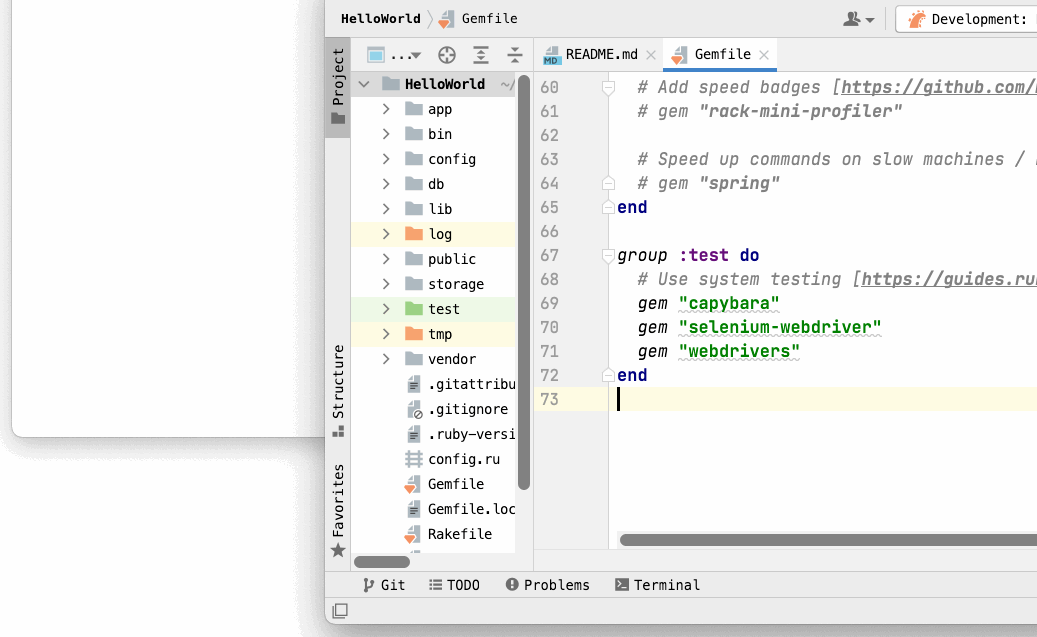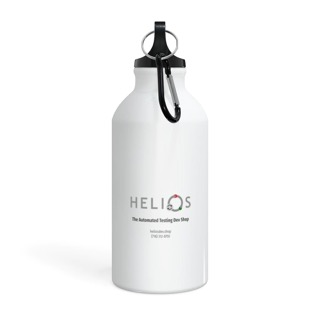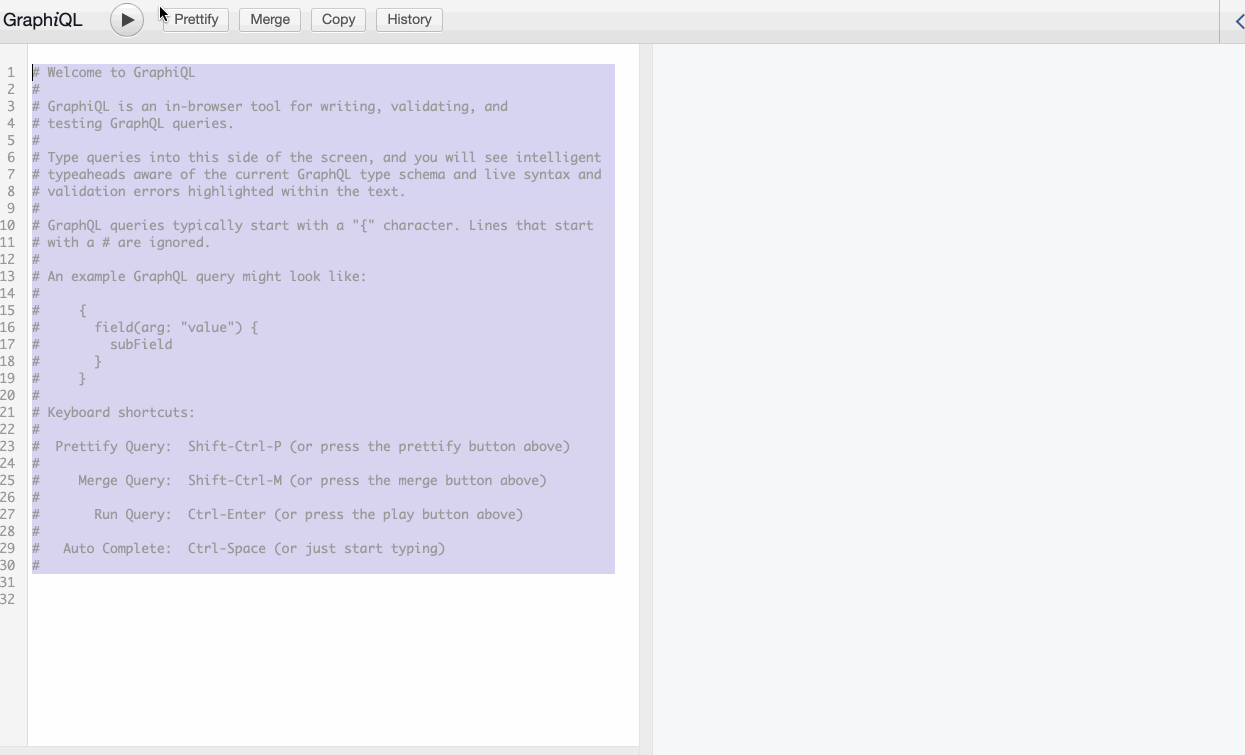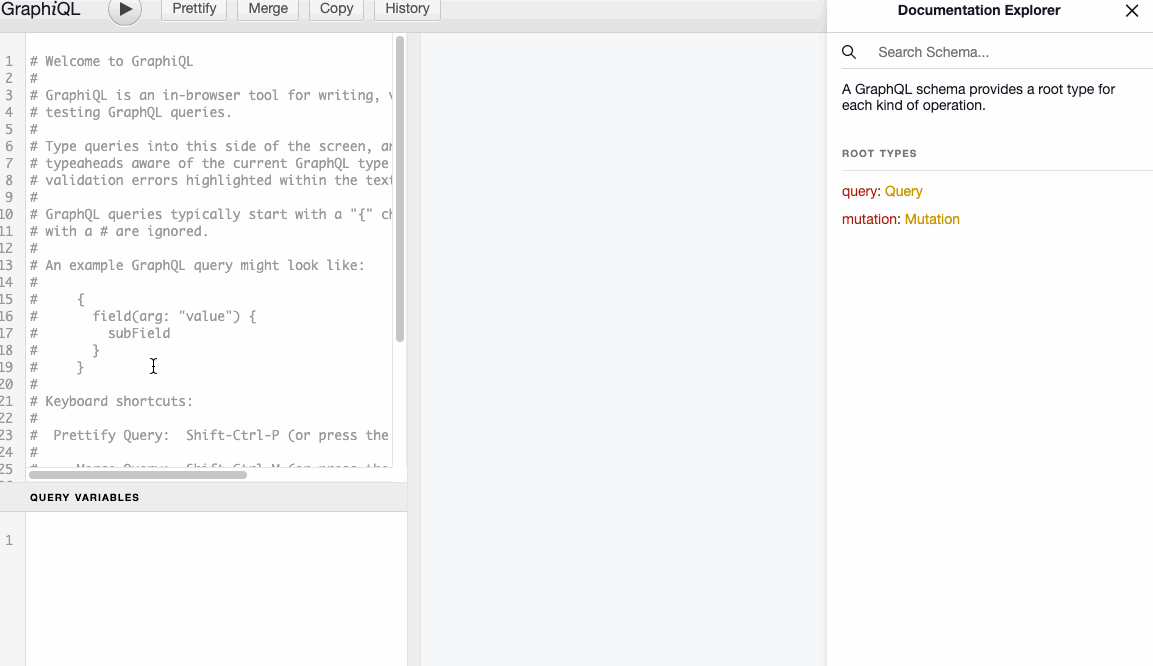When To Use Graphql

GraphQL is a querying standard. It’s like SQL in that it can read, modify, or return information about the data and data schema. It’s more like JSON or XML in that it was designed to be an internet-first standard, so it is engineered around two computer systems talking to each other over the internet. (In contrast, a SQL query happens directly between the server and database.) WHAT IS GRAPHQL? Rails-Hosted GraphQL Unlike the Apollo-provided service, hosting your own GraphQL in our Rails app means you can basically bolt on a GraphQL endpoint onto our existing Rails app, then define several type definitions, queries, and mutations. The types, queries and mutations tie into our ActiveRecrod objects, and Bob’s your uncle: you have a GraphQL-supporting API backed by Rails.
Here, you'll find a quick crash-course for GraphQL-Rails. If you are interested in hiring Helios Dev Shop to help you with your Rails-GraphQL setup, get started by scrolling down today.
So instead of multiple endpoints returning fixed data structures, the GraphQL server provides only one endpoint and responds with exactly the data requested by the client. The GraphQL server framework allows you to retrieve data declaratively because it provides only one endpoint.
Type is like a container— the metaphor I use is a sport bottle, like the Helios Sport bottle which you can get at the Helios Merch Shop:
The
Helios Sport Bottle
available exclusively at the
Helios Merch Shop
makes an excellent metaphor to be used when explaining Type definitions in GraphQL.

The type is a definition of the shape of the kind of liquid we’ll take on our hike today. The hike represents both the preparation we make to go on the journey (these are the type definitions — or sport bottles we’ll take on our hike), and also the concept of drinking water, Gatorade, or other thirst-quenching liquid (that will be our data).
The hike we are taking in the California wilderness is the GraphQL query — in metaphor — so our Query is the idea of seeking a rejuvenating experience. That is, we sought (queried for) a rejuvenating experience and the wilderness returned the rejuvenating experience to us.
Along the way, we took the Helios sport bottle like the one above (Remember, the sport bottle is the Type definition of what we can plan for, carry-in, and carry-out. It is a metaphor that represents the shape of data we take in and then consume along the hike).
Types


Queries
Mutations

The Mutation is what we affect when we make the trip (the Query). In beautiful California where we can take only pictures and leave only footprints, we do not make mutations.
When we go hiking (a metaphor for our GraphQL query), we carry our GraphQL type definitions (sport bottles) with us on our GraphQL queries (journeys), but we make no GraphQL mutations (leave no footprints) on the land. This means we will have a low environmental impact when enjoying its natural splendor.
Mutations are what happen when we want our Query — our journey with Type definitions (the sport bottle), the data, — to make a change to the world.
For example, if we take our Sport bottle to, say, a business meeting instead of the wonderful California wilderness, it might look like this (below).

In this meeting, we are asking for someone to change — to mutate — something about the world. We still packed our sport bottle (Type definition), we still made the trip to have the meeting (Query), but the purpose of our trip is to ask our colleagues for a specific change (Mutation).
Another useful feature of GraphQL is that it makes it easy to get all the data you need with a single query. Since GraphQL follows the relationships defined in the schema, it is possible to navigate from the entry point to related data in a single query. In addition, it allows you to combine different entities in one query.
In GraphQL this gets more complicated as each query can be different even if it works on the same object. Such aggregated queries are more difficult to model in GraphQL. While one of the main benefits of GraphQL is that clients can only query for the data they need, this can also be problematic, especially for public APIs where the organization has no control over the behavior of third-party client requests.
Developers often describe the main benefit of GraphQL as the fact that clients can get exactly the data they need from the API. API developers use GraphQL to create schemas that describe all possible data that clients can request through this service. All types exposed in the API are annotated in the schema using the GraphQL Schema Definition Language (SDL). All types supported by the API (such as Boolean, String, Int, Float, ID, Scalar) are specified in a GraphQL Schema Definition Language (SDL) schema, which helps determine what data is available and in what form.
GraphQL uses an extended type system to define API capabilities. GraphQL uses the concept of resolver functions to collect data requested by the client. GraphQL is an API query language that provides declarative data lookup to give the client the ability to specify exactly what data the API needs. As mentioned above, GraphQL, being a query language for APIs, gives clients the ability to query exactly what they need.
GraphQL provides a comprehensive and understandable description of the data in your API, giving clients the ability to request exactly what they need and nothing more. GraphQL provides a syntax for describing data requirements and interactions, allowing you to ask exactly what you need and get predictable results. GraphQL allows you to have detailed information about the necessary data on the backend. GraphQL allows you to get all the necessary data in one request; there is no need for subsequent requests.
This helps the client get the amount of data needed to render a particular view. Again, since GraphQL gives the client the ability to retrieve only the data it needs, nothing slows it down, since adding a new field to the query is very easy.
Really Think about When to Use GraphQL
This is where caching is the trickiest because it requires field-level caching, which GraphQL doesn't do easily with a single endpoint. GraphQL does not follow the HTTP cache specification, but uses a single endpoint. REST automatically enables caching, while GraphQL does not have an automatic caching system, but uses clients like Apollo Client, Relay, etc.
The main difference between GraphQL and REST is the way data is sent to the client. GraphQL and REST are able to distinguish when an API is for writing or reading data. GraphQL can be used to query data in any situation, including client-to-client using Apollo Link State, or even during a static build process.
Using GraphiQL or GraphQL Playground, you can simply validate your schema and even run queries and mutations to test your API. You can manipulate server side data through GraphQL using the mutation keyword before the query. Inside the "function", you must use the mutation available in the GraphQL API (use introspection queries to find it!)
With GraphQL, you can abstract existing APIs by plugging in client-side proxy models. Client proxy model; GraphQL can be added as an abstraction to an existing API so that each end user can specify the response structure to suit their needs. For example, clients can create a GraphQL specification based on their needs on a generic API provided by FireBase as a backend service.
Flexibility for API Developers: GraphQL saves the effort required by API developers to create custom endpoints at orchestration levels or API experimentation for all possible combinations of requests, since you can create different page views on the client using the same endpoint and schema. GraphQL makes it easy to collect data from multiple sources or APIs and then pass the data to the client in a single API call.
With GraphQL, any query can be executed on an endpoint, and the actions taken and the data returned are defined in the query itself. In REST architecture, clients make HTTP requests and send data as HTTP responses, while in GraphQL, clients use requests to request data. Unlike REST, the GraphQL query language allows you to query data from multiple different "resources" (such as blog posts, pages, authors, etc.) in a single API call using a single URL endpoint (usually over HTTP).
How You will Know When To Use GraphQL
For complex queries, GraphQL has to be designed very carefully and you can't just put it in a REST API or database. Extra care must be taken to ensure that GraphQL queries do not result in expensive connection requests that can degrade server performance or even DDoS the server. If you want to develop a simple application with a couple of fields, GraphQL can make things more difficult for you by adding elements like types, queries, solvers, mutators, and other high-level components.
If you want the client to control the type and amount of data it needs, GraphQL is perfect for your project. Remember that GraphQL is language agnostic, so you can read and write to the GraphQL API using any programming language or framework as long as it supports the protocol you need, such as HTTP. GraphQL is language agnostic, which means it can be used with any back-end framework or programming language, and is essentially an addition to a back-end service that allows developers to interact with the database and query data in a particular way. GraphQL is a query language and toolkit that uses HTTP to work with individual endpoints to optimize flexibility and performance.
Helios Dev Shop is the place for GraphQL